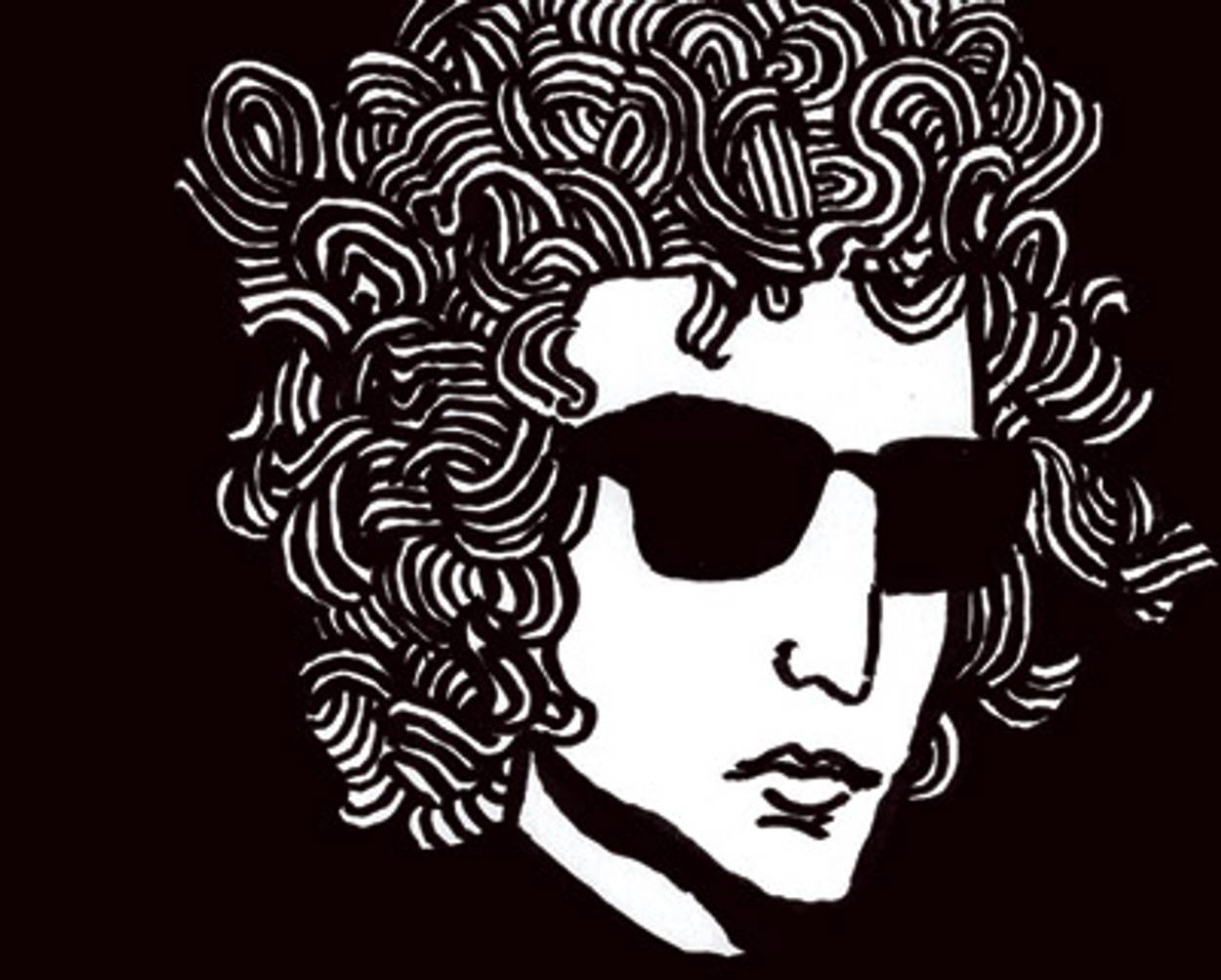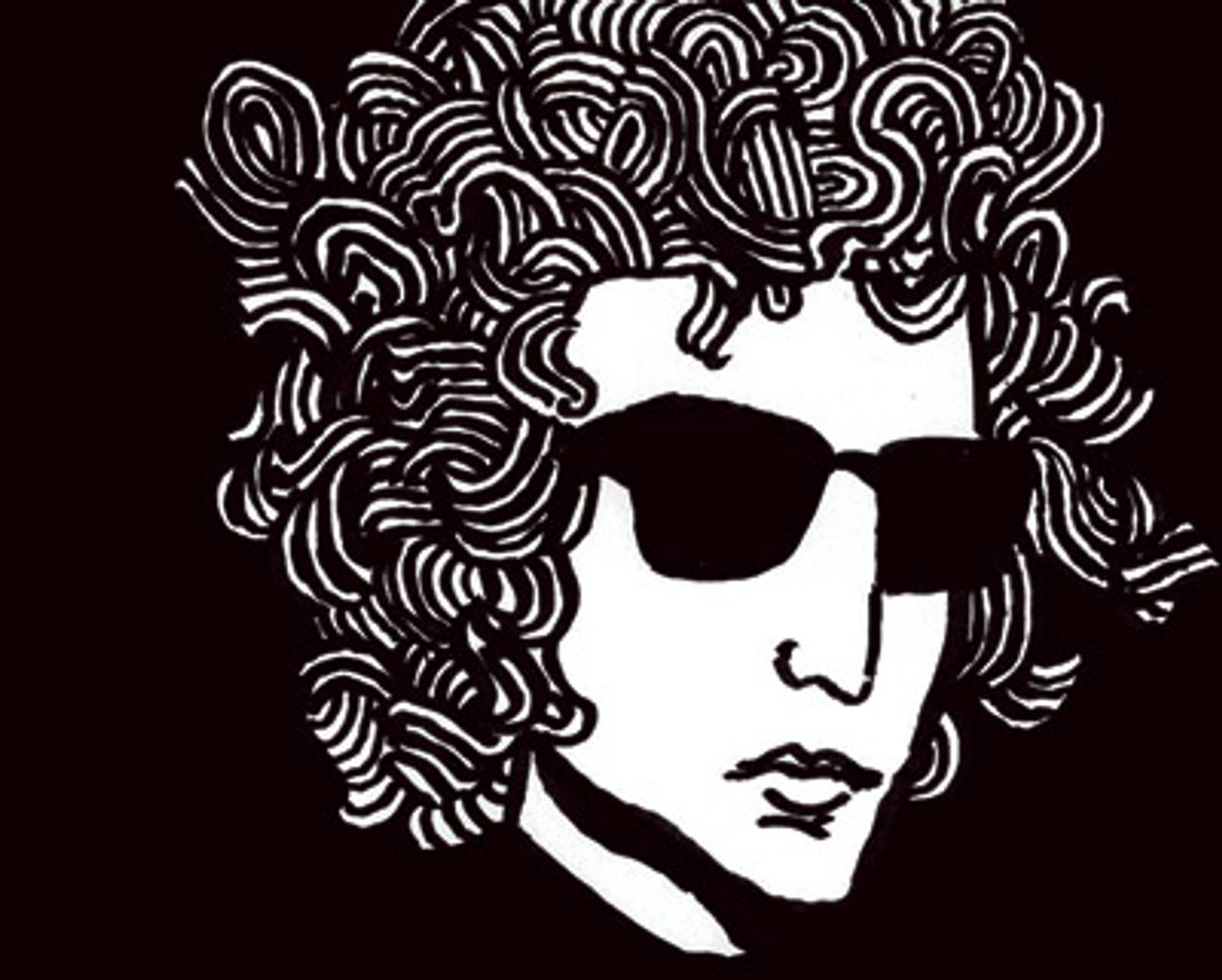The Wandering Kind
Bob Dylan can’t be pinned down. I’m Not There glories in not trying.




Is Bob Dylan Jewish? Of course he is. Of course he’s not. Why do you ask? What’s in it for you? What was it you wanted? Do I understand your question?
If that’s a confusing answer, well, Dylan’s evasive identity games aren’t just the context for his art, they’re part of it. That’s the idea behind Todd Haynes’ new movie I’m Not There, which may be the smartest biography of Dylan yet created. It’s also the most perverse: plotless, chronologically scrambled, more about Dylan’s presence than about his particulars. The words “Bob Dylan” are never uttered in the course of the movie. Instead, we see a succession of Dylan avatars, each with his own name, each played by a different actor and filmed in a different style and setting.
The first one to appear is a young African American boy, played by Marcus Carl Franklin, who calls himself Woody Guthrie; he announces that “singing’s kept me right in the world more than any Bible’s ever done.” Another version, the protest singer Jack Rollins (Christian Bale), becomes a born-again Christian, as Dylan did in the late ’70s, and is last seen singing “Pressing On,” from Dylan’s gospel-era, to a tiny audience on folding chairs in a community center. (John Doe’s recording of it, which Bale lip syncs, is actually pretty terrific.)
The most consistent Jewish presence in I’m Not There comes from Allen Ginsberg, played to hilarious perfection by David Cross. In his first scene, he tells Jude Quinn—the mid-’60s incarnation of Dylan played by Cate Blanchett—something he’d told a reporter who’d asked if the singer had sold out: “Perhaps you sold out to God.” But there’s only one direct allusion in I’m Not There to Dylan’s Jewish background: A tightly wound reporter who’s been investigating Quinn triumphantly announces on television that the rock ‘n’ roll idol’s real name is “Aaron Jacob Edelstein.”
The reporter isn’t trying to smear Quinn by declaring that he’s Jewish; he’s trying to claim victory by pinning him down to any identity at all. (In fact, even beyond the “Jude” = “Jew” wordplay, the name “Jude Quinn” has plenty of religious resonance in the context of Dylan’s career. I’m Not There restages the famous moment at a May 1966 concert in Manchester when disgruntled fan Keith Butler called Dylan “Judas”; the “Quinn” part refers to “Quinn the Eskimo (The Mighty Quinn),” a slightly later Dylan song that arguably turns on a metaphor for the arrival of the Messiah.) But that scene is also the last we see of the reporter, and the last we hear of “Edelstein.” That’s part of Haynes’ point: Whenever you expect Dylan to be something, he’ll instantly be something else.
Of course, the very first identity Dylan had to escape was being a Jewish kid named Robert Allen Zimmerman from small-town Minnesota who had an upscale bar mitzvah and went to Camp Herzl in Webster, Wisconsin, over the summers. For a while, when he was very young, he even tried to claim it wasn’t true. Anthony Scaduto’s authorized 1971 Bob Dylan: An Intimate Biography quotes “a Jewish coed who dated him for a time,” evidently during his brief period in college at the University of Minnesota: “When I knew him he was in no way being Jewish. That was something he was absolutely not being at all. Even after he knew that I knew he was Bob Zimmerman from up on the Range, he was not being Jewish. He was saying his mother wasn’t…” (The quote trails off there.)
By the time he started calling himself “Bob Dylan” and headed for New York City, he’d learned that being slippery about identity, or constructing new identities, was more fun and effective than blunt denials. The first newspaper article ever written about Dylan—Robert Shelton’s September, 1961, New York Times write-up—mentions a novelty song in his live repertoire: “‘Talkin’ Hava Nagilah’ burlesques the folk-music craze and the singer himself.”
Later, he learned to use “going back to his roots” as another kind of mask. Scaduto notes on the last page of his 1971 book that “Bob has started to study Judaism, and Hebrew…. He has even attended several meetings of the militant Jewish Defense League. The JDL’s head, Meir Kahane, will say only that Dylan has ‘come around a couple of times to see what we’re all about’ and has promised to donate money to the organization. Dylan refuses to discuss it.”
And Dylan’s own take on that period? In his 2004 memoir, Chronicles Volume One, he writes that he wanted to make the public reaction to him “lukewarm, indifferent and apathetic”—this was around the time that he released a deliberately awful record (1970’s Self Portrait) to get rabid fans to quit paying such close attention to him. Also, he says, “I went to Jerusalem, got myself photographed at the Western Wall wearing a skullcap. The image was transmitted worldwide instantly and quickly all the great rags changed me overnight into a Zionist. This helped a little.”
In the middle of I’m Not There, there’s a hilariously jolting take on Dylan’s appearance at the 1965 Newport Folk Festival—the performance at which, myth has it, he “went electric” (three years after his first electric recording; he can’t even be pinned down to that). In Haynes’ version, Jude Quinn and his band take the stage, open their guitar cases, pull out machine guns and open fire on the audience. Then the film cuts directly from metaphor to representation—they’re playing very loud rock ‘n’ roll—and, as in the legend, a tall fellow who looks just like Pete Seeger grabs a hatchet and tries to sever the power cables. Blanchett, as Quinn, is lip syncing Stephen Malkmus’s performance of “Maggie’s Farm,” in which the former Pavement lead singer bears down on its central line, “I try my best to be just like I am/But everybody wants you to be just like them.”
As it happens, Dylan’s actual performance at Newport that year was filmed by Murray Lerner, and has just been released on a DVD, The Other Side of the Mirror: Bob Dylan Live at the Newport Folk Festival 1963-1965. We don’t see Seeger and his axe, but we do hear the audience’s reaction to the electric “Maggie’s Farm,” a mixture of cheers and boos. We also see Dylan’s solo acoustic performance earlier the same day: He’s playing a bunch of whimsical songs in the vein of what he’d been doing a year before, he’s giving his devoted audience exactly what they’re expecting from him, and he’s pretty evidently bored out of his skull and itching to slough off his “folksinger” identity.
For all his perversity, Dylan is a brilliant artist, so of course everybody wants him to be just like them: folkies, Jews, filmmakers, you name it. He seems to have at least a detached interest in virtually everything he’s ever encountered, and he’s almost never been willing to be part of any club that wants him as a member. He made only one exception—during his born-again Christian period—and it can’t have hurt that the ideology he chose was one that horrified a lot of his longtime fans.
Since then, though, he’s been spotted in various Jewish contexts. He showed up at synagogue in Atlanta this year on Yom Kippur. He’s studied with Lubavitchers. He’s blurbed a book by Rabbi Manis Friedman. On the other hand, he’s said of his “roots” that “I ain’t looking for them in synagogues with six-pointed Egyptian stars shining down from every window, I can tell you that much.”
If you’re looking for Jewish content in Dylan’s songs, you’ll find it for sure, because their glory is that everything is in there—his lyrics are impossibly rich in connotation and subtext, and he seems to have absorbed, synthesized, and transfigured everything he’s ever read or listened to. Some of those sources, inevitably, are Jewish sources, right alongside the lines from Confederate poet Henry Timrod that show up on Modern Times, or the phrases from Junichi Saga’s Confessions of a Yakuza that resurface on Love and Theft, or the fragments of Keats’ “Ode to a Nightingale” that Christopher Ricks has found peppered throughout “Not Dark Yet.” This site, for instance, along with its catalogue of Dylan’s documented and rumored links to Judaism, features a convincing exegesis of the Jewish language and ideas in his intensely Christian song “Jokerman.” And as deep as Dylan’s onstage catalogue has become, the one song that reliably turns up in his set list virtually every night is “Highway 61 Revisited”—which begins, “God said to Abraham, ‘Kill me a son.’”
If you’re looking to claim Dylan as Jewish, though, you’ll probably be frustrated: He’s been having cameras pointed at him for over 45 years, and not one of them has yet managed to fix his identity in place. I’m Not There is named after a 40-year-old recording that had never officially seen the light of day before it appeared on the film’s soundtrack, despite the fact that it’s never taken much work for anyone with more than a passing interest in Dylan to track it down. That title is also effectively Dylan’s comeback to anyone who wants him to definitively be Aaron Edelstein or Woody Guthrie or Jack Rollins or Jude Quinn. Or, for that matter, Robert Zimmerman.